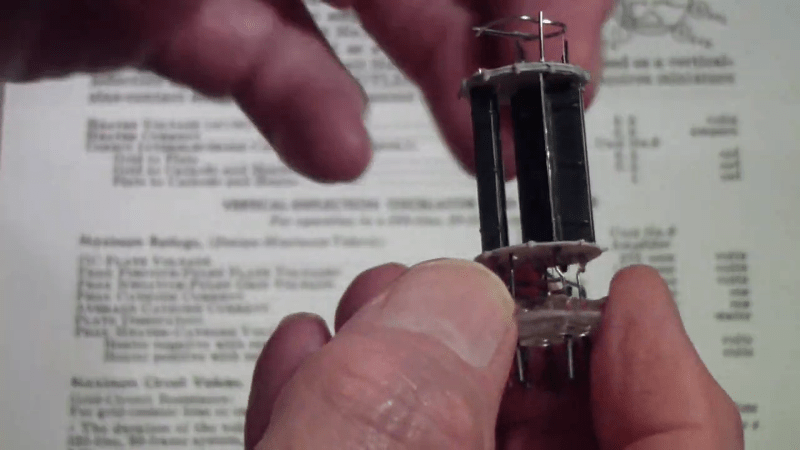We see quite a bit of work where people decapsulate ICs or other solid state devices to expose their inner workings. But how about hollow state? [Tomtektest] had a dual triode that has lost its vacuum integrity — gone to air, as he calls it — and decided to open it up to better expose its inner workings. (Video, embedded below.)
Of course, you can always see the innards through the glass, but it is interesting to have the envelope out of the way. Apparently, how you remove the glass is a bit tricky if you don’t want to damage the working bits as you remove it.
It was interesting to see that the elements of the tube were clearly separate as you might expect in a dual triode. However, one of the subtubes is much smaller than the other. [Tom] shows on the datasheet that the two triodes have very different specifications. The smaller one was typically used as an oscillator and the larger one was often used as an amplifier.
Tubes have a long history, even though we don’t use them nearly as much as we used to. There has been a resurgence in some areas, though, and some people are making their own.
















Best not do this with ignatrons.
Aww. Was hoping to see the plates peeled away.
Came for the tear-down, left disappointed. :-(
Any worries about oxidization of thoriated tungsten filaments? Or that silvery batch of barium the ‘getter’ leaves behind?
You have to heat tungsten filaments quite good to oxidize it. In the use of TIG welding electrodes They even get really hot. Also the getter will stay in place. Though I would not lick it.
Tom’s videos are great. I have several hi-res tube teardown videos on my channel.
https://youtu.be/0-2BD99TUxA
Thanks for highlighting TomTekTest.
If this is your thing, check out Vinyl Savor online and the Tube of the Month where he usually takes one apart. Very cool site.
I once accidentally decapsulated a 2A3 directly heated triode. My hands weren’t that happy with the glass and mica…